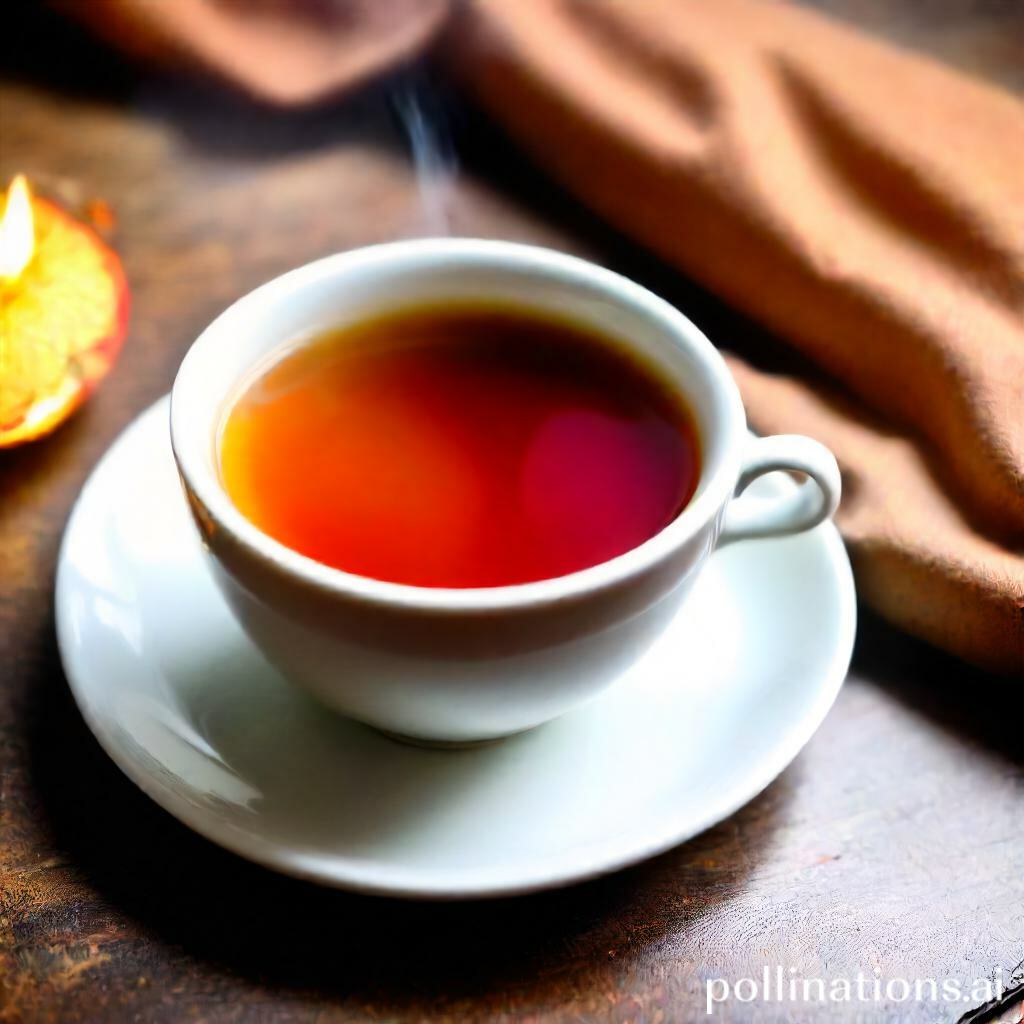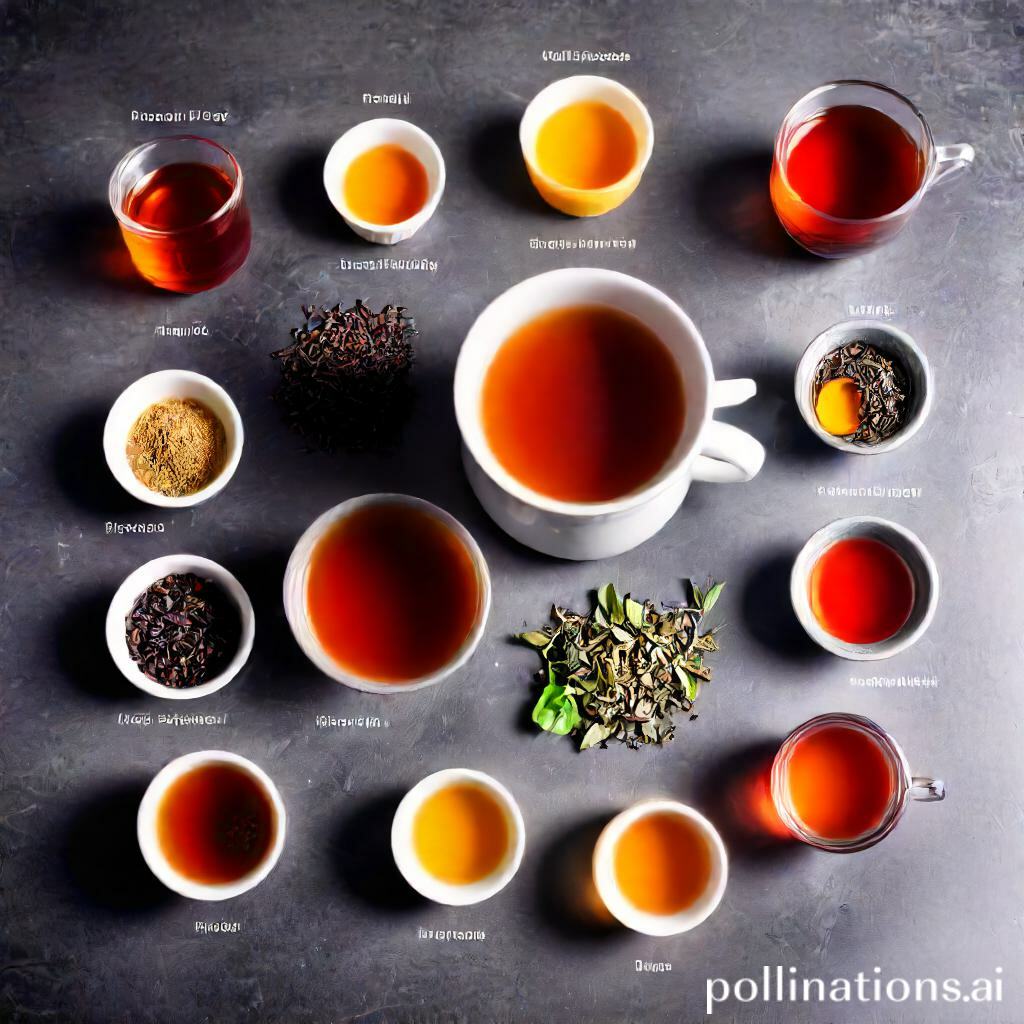Curiosity often leads us to question the nature of things we may not have considered before. Such is the case with the query, “Is hot tea a substance or mixture?” It seems like a simple question, but the answer holds a certain intrigue.
By examining the components of hot tea and delving into the definitions of substance and mixture, we can uncover the truth. So, if you find yourself pondering the classification of your beloved hot beverage, buckle up and prepare to satisfy your thirst for knowledge. Let’s explore whether hot tea is a substance, a mixture, or something entirely unexpected.
Definition of Essence
As for the concept of essence, it holds great significance in various fields, such as chemistry and physics. In basic terms, essence refers to a form of matter that possesses a uniform and definite composition. It is constituted of one or more elements or compounds that are chemically united.
1. Elucidating what comprises an essence
An essence is characterized by its distinct characteristics, such as density, melting point, and chemical reactivity. These characteristics remain unchanged regardless of the size of the sample or the origin of the essence. Essentially, essences possess a specific structure and composition that set them apart from other forms of matter.
2. Instances of essences in day-to-day life
Essences can be found abundantly in our everyday lives. For instance, water is a well-known essence that exists in the form of a liquid, solid (ice), or gas (water vapor). Other examples of essences include oxygen, salt, sugar, and iron. These essences possess unique characteristics and serve as fundamental building blocks for various natural and man-made materials.
3. Determining if a cup of hot tea meets the criteria of an essence
When analyzing a cup of hot tea, it is crucial to assess its composition and characteristics. Hot tea is typically prepared by steeping dried tea leaves in boiling water. Whilst the tea itself is considered an essence, the resulting hot tea beverage may contain additional substances, such as sugar, milk, or lemon.
Therefore, a cup of hot tea can be categorized as a mixture instead of a pure essence. It is a combination of the tea extract and other ingredients that may modify its composition and characteristics. In contrast, the tea extract itself can be deemed as an essence as it comprises specific chemical compounds responsible for its unique taste and aroma.

Defining a Combination
A combination is a fusion of two or more substances that are not chemically linked together. In a combination, the constituents preserve their distinct characteristics and can be physically separated.
Instances of Regular Combinations
There are numerous instances of combinations in our everyday lives:
- Trail Mix: A blend of nuts, dried fruits, and chocolate candies.
- Salad: A fusion of various vegetables, dressing, and toppings.
- Air: A combination of gases, chiefly nitrogen, oxygen, and trace amounts of other elements.
Examining Hot Tea as a Combination
Touching on hot tea, it can be regarded as a combination. Hot tea is usually prepared by steeping tea leaves or tea bags in hot water. During this process, the water extracts the soluble compounds from the tea leaves, such as caffeine, polyphenols, and flavors.
The resultant liquid is a fusion of water and these extracted compounds, which together produce the distinctive taste and aroma of hot tea. As a combination, the constituents of hot tea can be separated through various techniques, like filtration or evaporation.
Table: Instances of Combinations
| Combination | Constituents |
|---|---|
| Trail Mix | Nuts, dried fruits, chocolate candies |
| Salad | Various vegetables, dressing, toppings |
| Air | Nitrogen, oxygen, trace elements |
Composition of Hot Tea
Hot tea is a widely enjoyed beverage, but have you ever thought about what it’s made of? In this section, we’ll explore the makeup of hot tea and identify the various substances it contains.
1. Makeup of Hot Tea
Hot tea is a complex blend that contains several elements, each contributing to its unique flavor and aroma. Let’s take a closer look at these components:
Water:
The main ingredient in hot tea is water. It acts as a solvent that extracts the flavors and compounds from the tea leaves or tea bags.Tea Leaves:
The tea leaves themselves contain a variety of substances, including polyphenols, caffeine, and volatile compounds. These compounds give tea its distinct flavor and potential health benefits.Flavorings:
Many people choose to add flavorings to their tea, such as sugar, honey, or lemon. These flavorings contribute to the taste and sweetness of the beverage.Milk:
In some cases, milk is added to hot tea to create a creamy texture and mellow out the flavors. This is particularly common in certain types of tea, such as chai.
2. Identifying the Various Substances Present in Hot Tea
Now, let’s delve deeper into the various substances that can be found in hot tea:
Polyphenols:
Tea is abundant in polyphenols, which are antioxidants that have been linked to numerous health benefits, including reduced risk of chronic diseases.Caffeine:
Hot tea contains caffeine, a natural stimulant that can provide an energy boost and enhance alertness.Flavonoids:
Flavonoids are a type of polyphenol found in tea that contribute to its flavor and may have antioxidant and anti-inflammatory properties.Volatile Compounds:
These compounds are responsible for the aroma and fragrance of hot tea. They are released when hot water is poured over the tea leaves.
So, is hot tea considered a substance or a mixture? Technically, it’s a mixture since it consists of different components that can be separated. In contrast, when enjoyed as a beverage, hot tea is more commonly referred to as a substance due to its unified taste and appearance.

Examining the Physical Attributes of Hot Tea
Hot tea, a beloved and widely consumed beverage, possesses various physical attributes that contribute to its unique characteristics. Embracing these attributes can provide insights into the classification of hot tea, shedding light on whether it is considered a substance or a mixture.
Temperature
One of the primary physical attributes of hot tea is its temperature. When freshly brewed, tea is typically served at a temperature ranging from 160 to 185 degrees Fahrenheit (70 to 85 degrees Celsius). The high temperature not only adds warmth and comfort but also influences the perception of flavor and aroma.
Color
The color of hot tea varies depending on factors such as the type of tea leaves used and the brewing time. Common colors observed in hot tea include golden, amber, reddish-brown, and dark brown. These colors are attributed to the presence of pigments, such as polyphenols and flavonoids, which contribute to both the visual appeal and the taste of the tea.
Aroma
Hot tea is known for its fragrant qualities, which stem from volatile compounds released during the brewing process. These compounds, including terpenes and esters, contribute to the distinct smells associated with different types of tea, such as floral, earthy, or fruity aromas. The aroma of hot tea adds to the overall sensory experience and can greatly influence its enjoyment.
Taste
The taste of hot tea is a result of chemical compounds present in the brewed beverage. The combination of polyphenols, amino acids, and other flavor-impacting substances contributes to the diverse flavors found in various tea types, such as black, green, or herbal teas. The taste profile of hot tea can range from bitter and astringent to sweet and floral, offering a wide range of sensory experiences.
Texture
Although less commonly discussed, the texture of hot tea also plays a role in its physical attributes. The mouthfeel of tea can vary from light and watery to velvety and creamy, depending on factors such as the presence of oils or additives like milk or sugar. The texture adds another dimension to the overall sensory experience of drinking hot tea.
Classification of Hot Tea
Based on the examination of its physical attributes, hot tea can be classified as a mixture rather than a pure substance. It consists of a combination of water, tea leaves, and various dissolved substances, including polyphenols, caffeine, and volatile compounds. These components interact to create the complex and enjoyable beverage that is hot tea.
| Physical Attributes of Hot Tea |
|---|
| Temperature |
| Color |
| Aroma |
| Taste |
| Texture |
Chemical Properties of Hot Tea
As for hot tea, its chemical properties are essential in determining if it is a substance or a mixture. Let’s explore the chemical aspects of hot tea and evaluate its classification.
1. Apprehending the Chemical Properties of Hot Tea
Hot tea is mainly composed of water, but it also contains different chemical compounds that contribute to its taste, smell, and color. These compounds include polyphenols, catechins, caffeine, amino acids, and volatile oils.
The polyphenols in tea, such as flavonoids and tannins, have antioxidant properties and contribute to its health benefits. Catechins, which are a type of flavonoid, are known for their potential anti-inflammatory and anticancer properties.
The caffeine in hot tea acts as a stimulant, providing a temporary energy boost. Additionally, amino acids like L-theanine enhance the unique taste of tea and have been linked to relaxation and stress reduction.
Hot tea also contains volatile oils that give it its distinctive aroma. These oils consist of compounds such as geraniol, linalool, and limonene.
2. Deciphering the Classification of Hot Tea
Based on its chemical properties, hot tea can be classified as a mixture rather than a pure substance. It is a complex combination of water and various dissolved compounds.
The presence of different chemical constituents in hot tea makes it a heterogeneous mixture. These compounds can be separated through physical methods like filtration or evaporation. Additionally, the concentration of these compounds can vary depending on factors such as tea type, brewing technique, and steeping time.
Conclusion
After a thorough discussion and analysis, it can be concluded that hot tea is indeed a mixture rather than a pure substance. This determination is based on the fact that tea is composed of various components such as water, tea leaves, and potentially other additives.
These components can be separated through physical means, indicating that hot tea possesses the characteristics of a mixture. By Cognizing the nature of hot tea, we gain insights into its properties and the processes involved in its preparation.
FAQ about Hot Tea: Substance or Mixture?
FAQ 1: Is hot tea considered a substance or a mixture?
Hot tea is classified as a mixture.FAQ 2: What are the defining characteristics of a substance?
A substance is a pure form of matter that cannot be separated into other components by physical means.FAQ 3: How do you differentiate between a mixture and a substance?
A mixture is a combination of two or more substances, each retaining its own properties and can be separated by physical means. In contrast, a substance is a pure form of matter that cannot be separated into other components.FAQ 4: Can hot tea be classified as both a substance and a mixture?
No, hot tea is considered a mixture because it is a combination of water, tea leaves, and possibly other ingredients such as sugar or milk. These components can be separated by physical means, such as filtering or straining.FAQ 5: Are there any health implications associated with hot tea being a substance or mixture?
The classification of hot tea as a substance or mixture does not have direct health implications. Nevertheless, the specific ingredients in hot tea, such as caffeine or herbal additives, may have health effects that vary from person to person. It is advisable to consult with a healthcare professional for personalized advice regarding the consumption of hot tea.Read Similar Post:
1. Is Vahdam Tea Good?
2. What Is First Flush Tea?

